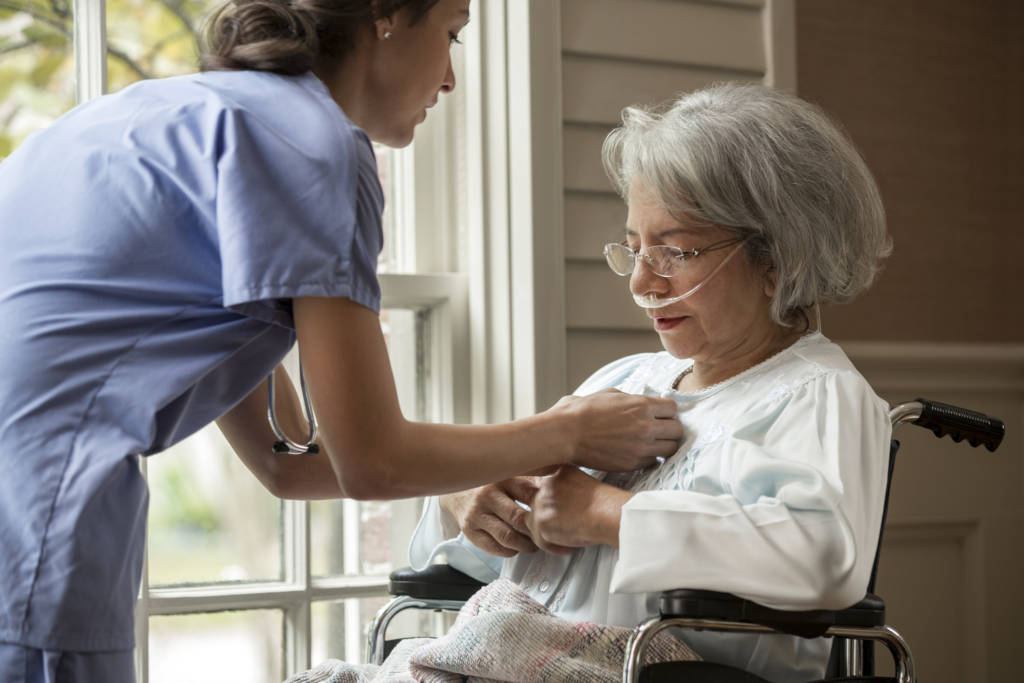
They say good help is hard to find, and America’s immigration policies could be making it even tougher in the health care field.
Immigration crackdown efforts, the border wall included, are very likely to cost the elderly and disabled the care that they desperately need, a new study argues.
More than 3 million immigrants work in the U.S. health care system, accounting for about 1 in 4 people in that field, said lead researcher Dr. Leah Zallman, an assistant professor of medicine at Harvard Medical School.
These range from doctors and nurses to home health care workers to employees at long-term care facilities, researchers said.
The analysis also included “non-formal” direct care health workers, those who are independently hired by either families or non-medical facilities to provide care for aging and disabled folks.
Attempts to limit immigration will serve to further deplete a system that’s already struggling to find enough workers to care for the aging and infirm, Zallman said.
America’s elderly population is expected to double by 2050, and it’s projected that 3.5 million additional health care workers will be needed by 2030, the researchers said in background notes.
“We’re already seeing workforce shortages in health care, and specifically in direct care,” Zallman said. “My patients are being cared for by immigrant populations, but many of them have a hard time finding people to hire. I have a clinical concern for my own patients being able to get the care they need.”
Zallman and her colleagues used data from the U.S. Census Bureau and the U.S. Bureau of Labor and Statistics to estimate how many immigrants work in all of the sectors of the U.S. health care industry.
They found that about 18% of all health care workers are immigrants, more than their 15.5% share of the nation’s population.
Immigrants also account for about 23% of employees in the long-term care sector.
About 27% of direct care workers — home health and personal care nurses and aides — are immigrants, and immigrants also account for a full 30% of the housekeeping and maintenance workers at nursing homes.
“This study reinforces what we’ve been saying for years — foreign-born workers are an intricate part of the senior living workforce,” said Lindsay Schwartz, associate vice president of workforce and quality improvement at the American Health Care Association and National Center for Assisted Living.
“Population projections indicate we have a surmounting challenge in having enough caregivers for our residents in the years to come,” Schwartz said.
“Therefore, the ability to recruit and train immigrants is key, and we support legislation that would help expand opportunities for migrants, ‘Dreamers’ and those with temporary protected status.”
The study also broke down the contributions of immigrants by their immigration status:
- Legal noncitizen immigrants make up 9% of direct care workers, but account for only 5% of the U.S. population.
- Naturalized citizens are less than 7% of the overall population but account for 14% of direct care workers.
- About 13% of all housekeeping, construction and maintenance workers at nursing homes are illegal immigrants.
Attempts to limit immigration overall are damaging, but so are efforts to only allow highly educated and wealthier immigrants into the country, Zallman said.
Poor immigrants with limited education make up a large percentage of the health care workforce, and their contributions should be acknowledged, she said.
“The reduction of that type of immigrant is going to compromise the care of our elderly and disabled,” Zallman said.
The new study was published June 3 in the journal Health Affairs.
More information
The Institute of Medicine has more about the public health workforce shortage.
